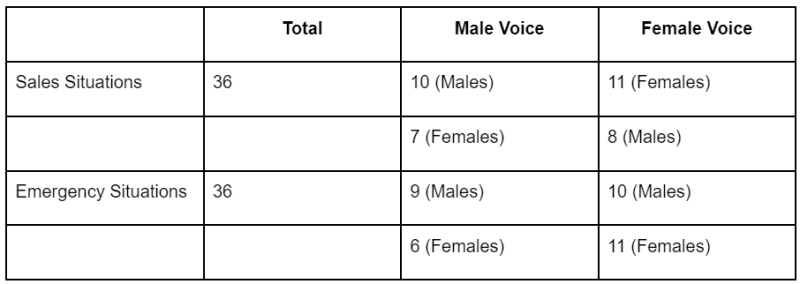Academic Report - Survey on Gender-related Topics
By daniel chen
Introduction
The question of whether a male or female voice is more comforting is a well-known topic, We found that, generally people find a female voice more calming. However, we want to see if this changes depending on the situation. This study focuses on two situations: sales interactions and emergencies. We're trying to figure out if a male or female voice is better for effective communication in each case.
Research Methods
This survey attempts to interactive with people, To achieve this, the researcher designed a board featuring two pictures and a coin slot for participation, the first picture is about supermarket radio, and second one is about fire alarm, two recordings were played, one with a female voice and the other with a male voice. Respondents can view a picture on the blackboard and insert a coin accordingly. I used 'llElevenLabs' to record four speeches, two with a male voice and two with a female voice. the content is “廣播請注意,有名五歲的男童走失,請家長竟快來櫃台領取。” the other one is “廣播請注意,現在已發生火災,請盡快前往逃生出口。”.
image 1, box with pictures showing hypothetical scenario and slots to for respondents to make judgments regarding gender, image 2, box with pictures showing hypothetical scenario and lid of judgment slots open
Data Results
The sales situation scenario involved 36 respondents, 17 individuals believe a male voice is more suitable, including 10 males and 7 females. Meanwhile, 19 individuals prefer a female voice, with 8 males and 11 females expressing this preference. In emergency situations with a total of 36 people, 15 believe a male voice is more suitable, consisting of 9 males and 6 females. Meanwhile, 21 individuals prefer a female voice, with 10 males and 11 females expressing this preference.
Discussion
The study's findings are interesting, especially when compared to the common belief that people generally find female voices more comforting. Although a some survey indicates a general preference for female voices, this study reveals a more balanced preference in sales and emergency situations. People seem to like both male and female voices in these situations, showing a connection between voice preferences and different communication scenarios.
Conclusion
In conclusion, about the same number of people prefer male and female voices, this shows people have their own voice preferences, and these preferences are not necessarily influenced by the situation or the gender of the speaker.



